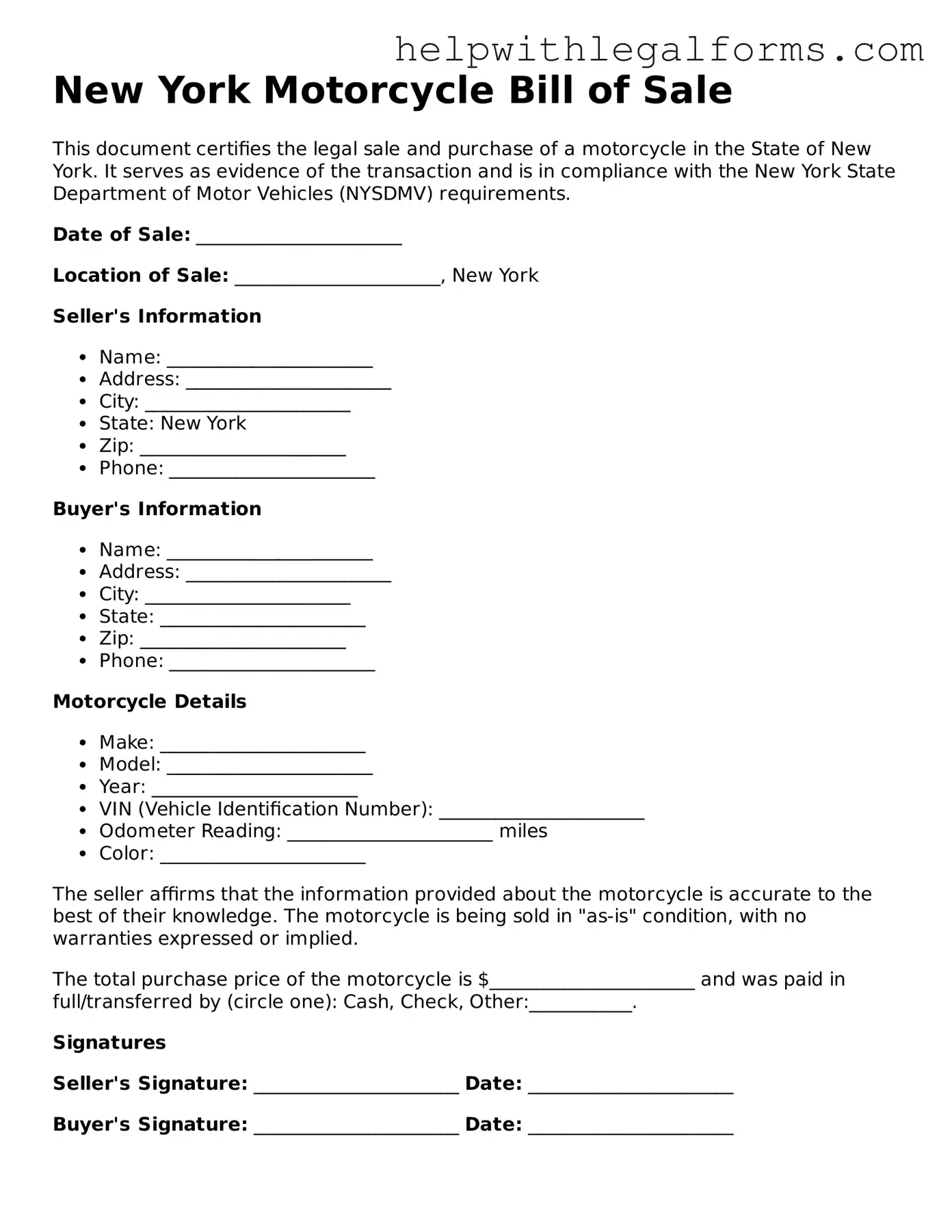What is a Motorcycle Bill of Sale form in New York?
A Motorcycle Bill of Sale form in New York is a legal document that records the sale and transfer of ownership of a motorcycle from a seller to a buyer. This document serves as a receipt for the transaction and typically includes details such as the date of sale, purchase price, and descriptions of the motorcycle. In New York, it provides proof that a lawful sale has occurred and is crucial for the new owner to register the vehicle in their name.
Is a Motorcycle Bill of Sale required for registering a motorcycle in New York?
In New York, when a motorcycle is bought or sold, the Department of Motor Vehicles (DMV) generally requires a properly completed Motorcycle Bill of Sale for the registration process. This document, along with the title transfer and other required paperwork, must be presented to the DMV to update the vehicle’s registration and title. It’s always recommended to check the latest DMV requirements, as these can change.
What information needs to be included in a New York Motorcycle Bill of Sale?
A comprehensive Motorcycle Bill of Sale should include the full names and addresses of both the seller and buyer, a description of the motorcycle (make, model, year, VIN), sale date, purchase amount, and signatures of both parties. Including an acknowledgment of the motorcycle's condition and any warranties or "as-is" status at the time of sale is also advisable for clarity and to avoid future disputes.
Do both seller and buyer need to sign the Motorcycle Bill of Sale in New York?
Yes, both the seller and buyer need to sign the Motorcycle Bill of Sale for it to be considered valid and enforceable in New York. The signatures verify that both parties agree to the terms of the sale, including the sale price and condition of the motorcycle. It’s also recommended that the signatures be notarized, although not mandatory, to further authenticate the document.
Can you create a Motorcycle Bill of Sale by yourself, or do you need a lawyer in New York?
Creating a Motorcycle Bill of Sale in New York can be done without the assistance of a lawyer. There are templates available online or guidelines provided by the New York DMV. However, for complex situations or for added legal protection, consulting with a lawyer might be beneficial to ensure that all aspects of the sale are legally covered and the form meets all state requirements.
What happens if you lose your Motorcycle Bill of Sale in New York?
If you lose your Motorcycle Bill of Sale in New York, it’s important to try to obtain a duplicate copy, especially if the motorcycle has not yet been registered in the buyer’s name. The seller might be able to provide a copy. If not, drafting a new document that both parties can sign again may be necessary. Keeping a digital copy of the bill of sale can prevent such issues. Without this document, registering the motorcycle or proving ownership could become significantly more challenging.
